
views
Stains
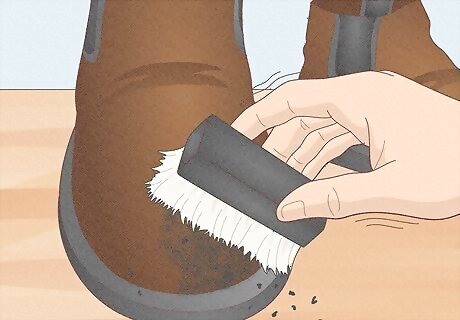
Rub the stained area with a brush or towel. Before doing anything else, gently buff the surface of your suede item to remove loose dirt and debris. Brush back and forth with light pressure so you don’t damage the nap of the suede. Focus on the stained area, but brush the rest of the surface if you see other dirt or want to even out the texture of the suede all over. Use a suede brush, a clean terrycloth towel, or an old (but clean) toothbrush. The brush will also help restore the texture of the suede, which can start to look messy or flat when the suede gets dirty, greasy, or wet. Just brushing the suede may be enough to remove some stains.
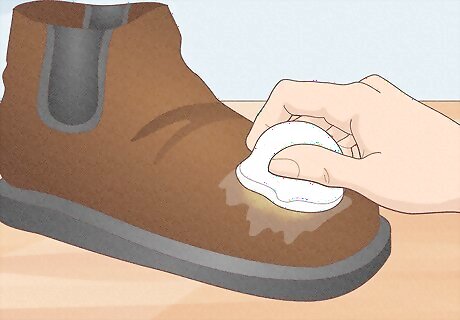
Blot away minor surface stains with a damp cloth. Some stains, such as mud, scuff marks, or water stains, may easily come out with a gentle spot cleaning. Spray a clean, white cloth with a little water so that it’s damp, but not soaking wet. Pat the stained area gently to lift out the dirt, but try not to rub any water deep into the fibers of the suede. When you’re done, brush the area with a toothbrush or suede brush, then lay a towel on top to soak up the water. Place something heavy on top of the towel, like a large book, to create better contact with the suede so that it can soak up the moisture more effectively. Leave it to dry for a few hours.
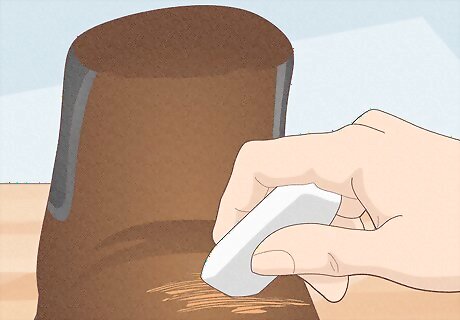
Remove dry stains and scuff marks using a pencil eraser. Don't use a pink eraser, as this can transfer pink dye onto your items. Instead, use a colorless a white or brown gum eraser. Brush the area lightly first with a toothbrush or suede brush to remove loose dirt, then gently rub the stain with the eraser to get rid of stubborn dirt and discoloration. If the pencil eraser doesn't work, gently rub a nail file over the dry stain. You can also rub dirt out of suede with a slice of stale bread! Make sure the bread is stale enough to be hardened and rough, so it can effectively buff out the stain. Avoid using a chemical stain remover. It could create even more damage, especially if it isn't designed for use on suede. Don't use any cleaning products made with bleach, either. This will further stain the suede and completely change the color.

Remove coffee, juice, and tea stains with vinegar. Lightly dampen a clean, white cloth with white vinegar. The cloth should be moist, but not sopping wet. Gently dab the stain to lift out the discoloration. For set-in stains, you might need a more specialized product, such as a suede shampoo. Dilute the shampoo in water according to the package directions, then work it into the stained area with a suede brush. Rinse out the lather completely and allow your suede to dry.
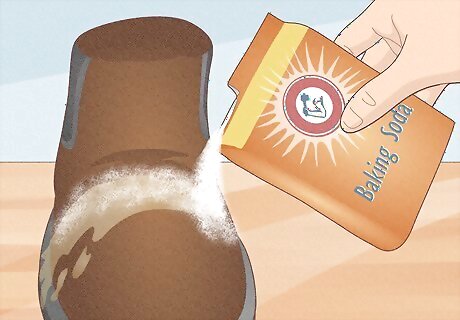
Remove oil or grease stains with baking soda. Blot the excess oil with a clean cloth, then sprinkle the spot with baking soda. Let it sit for a few hours or overnight, then brush it away using a suede brush or a clean cloth. Alternatively, you can use cornstarch to soak up oil stains. Simply sprinkle the cornstarch on the stain, let it sit for at least an hour, then wipe it away with a cloth or brush.
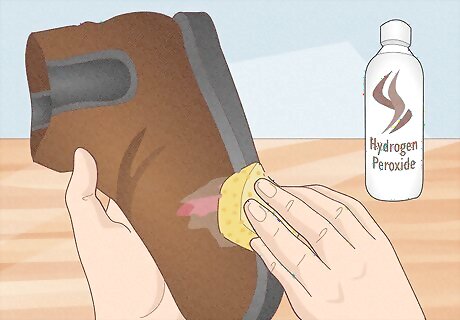
Treat blood stains with hydrogen peroxide. If possible, start cleaning the stain while the blood is still fresh. Dab the area with a cloth dampened with cold water, then blot the stain with a clean, dry cloth. Keep doing that until you’ve soaked up as much blood as possible. Moisten another clean cloth with hydrogen peroxide, then dab the stain with that. Gently rinse the area with a cloth or sponge moistened with clean, cool water. Be careful using hydrogen peroxide on colored suede, since it could cause bleaching or discoloration. Test the hydrogen peroxide in an inconspicuous spot first. Unfortunately, it can be extremely difficult to get blood stains out of suede and other forms of leather. If all else fails, you may be able to cover up the stain by dying the suede. Hydrogen peroxide may also help treat a variety of other stains, such as urine, mildew, wine, or juice.
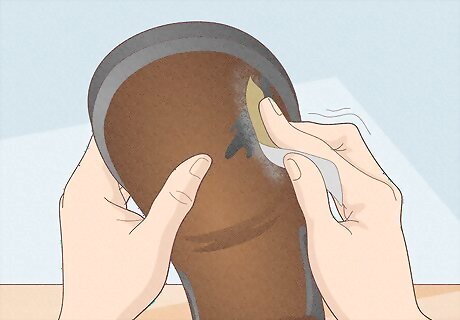
Rub out ink stains with sandpaper. Choose a fine-grit sandpaper and test it in an inconspicuous area first to make sure it doesn’t damage the suede. Buff the stain very gently until most of the ink appears to be gone, then rub it with a soft-bristle toothbrush or suede brush dipped in white vinegar to take out whatever is left. Finally, brush the area with a dry toothbrush or suede brush to restore the texture of the suede. You can also try using an emery board to rub away ink stains.

Tackle large or stubborn stains with suede shampoo. If nothing else works, try a suede shampoo or leather cleaner designed for suede. Follow the instructions on the bottle to make sure you’re using the product correctly. Typically, you’ll need to dilute 1 part shampoo in 2 parts water, then work the mixture into the suede with a brush to create a nice lather. Rinse the shampoo out thoroughly with clean water when you’re done, either by running water from a faucet over the suede or by wiping it with a clean, damp cloth. Allow the suede to air dry. Focus on the stained area, but go over the rest of the surface of the suede item as well. This will prevent the suede from developing an uneven appearance when it dries. If you’re cleaning shoes, stuff them with paper towels before you set them out to dry. This will soak up excess water and help the shoes maintain their shape. You can buy suede cleaner at a department store, in a shoe store, or online.
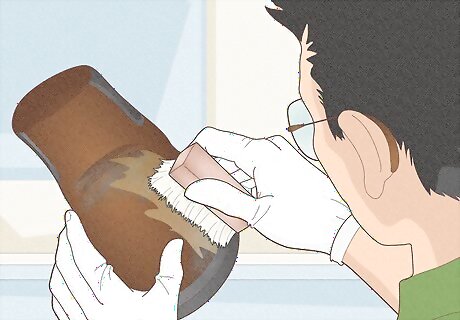
Get your suede professionally cleaned if nothing else works. It may be expensive, but sometimes turning to an expert is the safest and most effective way to take care of suede items. Dry cleaners who work with suede can clean garments, such as suede jackets or gloves. They may also be able to clean accessories, such as purses. If you have suede shoes, take them to a cobbler. Cobblers have the appropriate skills and supplies to tackle the toughest stains. For suede couches or other furniture, hire an upholstery cleaning service.
General Care
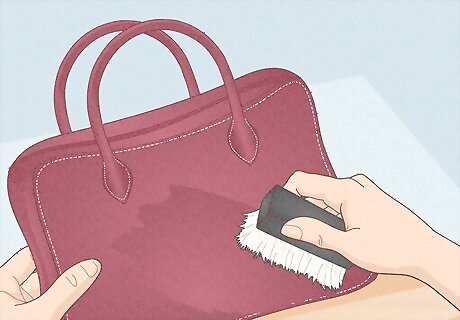
Brush suede daily to remove scuffs and restore the nap. Suede brushes usually have a wire-bristled side for brushing off debris and a rubber-bristled side for buffing up the nap of the suede. Every day or after each wear, gently brush your suede jacket, shoes, or accessories, first with the soft side, then with the wire-bristled side. Brush in the direction of the fabric's grain to avoid tearing or damaging it. If you don’t have a suede brush, use a toothbrush or white terrycloth towel. Use the brush to remove dirt and dust that has collected on your suede item. The brush will also remove scuff marks. If your item is muddy, allow the mud to dry before brushing it off. Avoid brushing too hard with the wire-bristled side. Use gentle, short strokes to freshen the nap.
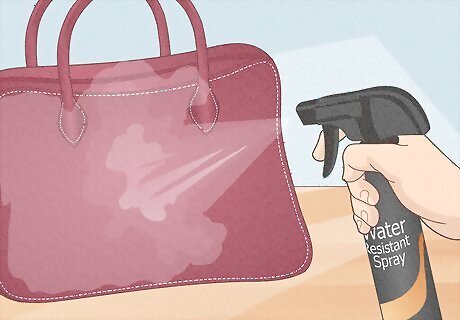
Spray your suede with a waterproofer. Suede protector sprays may be purchased at leather stores, shoe stores, or other places that sell suede. They protect the suede from water, oils, and other elements that might stain or damage it. Spray the protector all over the suede item, taking care not to soak any one area. Allow it to dry according to the instructions on the package. Use the suede protector at least once a year to keep the suede in top condition. Ideally, you should apply a protective spray to your new suede item before the first time you wear or use it.
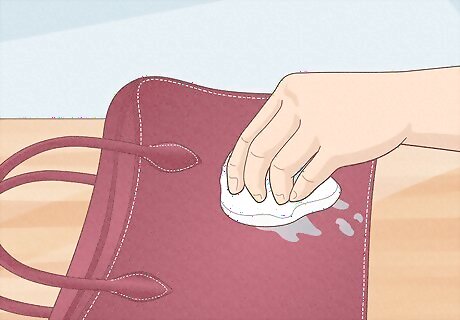
Blot away water immediately to prevent stains. Use a clean, white cloth to blot the liquid. Don't apply too much pressure, as this will force the water deeper into the fabric. Rough up the area for 1-2 minutes with a soft suede brush or toothbrush. Allow the water to dry after blotting the area. If possible, go over the surface of the suede with a blow dryer while you brush it. If the dried water stain is a different color from the rest of the item, try spraying the entire surface with a light mist of water and allowing it to dry. This will help the spot blend in. If your suede shoes got soaked, stuff them with paper or a shoehorn before letting them dry, to prevent the suede from getting misshapen.
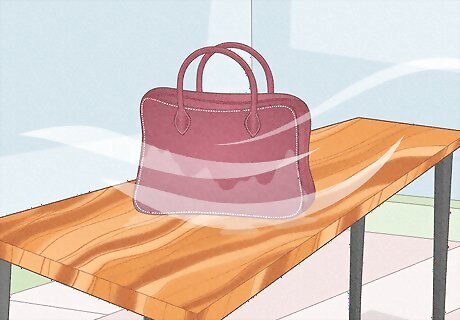
Air-dry your suede if it gets wet. If your suede gets wet, don’t fret! You can usually buff out water stains with a suede brush or eraser. However, be careful about how you dry suede. Heat-drying your item could damage and warp it. Instead, gently shape the item and allow it to air dry lying flat or on a hanger. If you’re drying a garment, such as a jacket, hang it on a plastic hanger. A wood or metal hanger could stain the suede as it dries.
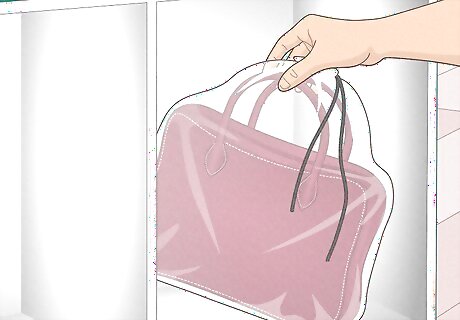
Cover suede to protect it from dust. When you put away a suede item, place it in a box or breathable garment bag to keep it clean and safe. Store it in a cool, dark place, away from heat, humidity, or sunlight. Avoid storing suede with newspaper, since the ink may rub off on the leather and stain it. Wrap items that you don't use often in sheets or pillow covers, or store them between sheets of white paper.

Fix bald spots with flocking powder. If there are spots where the nap has rubbed away completely, gently sand the area down to smooth it and remove dirt. Paint fabric glue on the bald spot with a paintbrush, then sprinkle the area with flocking powder in a color that matches the suede. Allow the glue to dry for 12-24 hours before wearing or using the item again. You can buy flocking powder and fabric glue online or at a craft supply store.
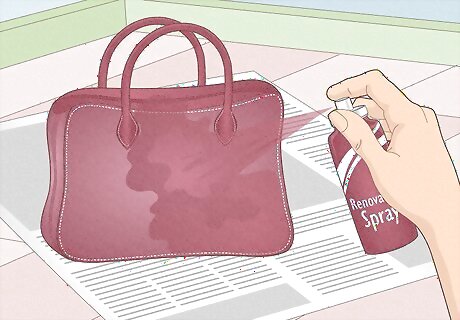
Restore lost color with a renovating spray. If your dyed suede is starting to fade, look for a suede or nubuck renovating spray in a matching color. Before you start, brush the suede clean. Remove the laces if you’re working with shoes. Follow the directions on the package to apply the spray. Typically, you’ll need to spray the suede all over from about 7 or 8 inches (18 or 20 cm) away so that the color appears even and consistent over the entire surface. Protect your work surface by laying down newspaper or paper towels under the suede item. You can also protect any areas of the item itself that you don’t want to dye (such as the soles of your shoes) by covering them in masking tape. Look for suede renovating sprays online or at your shoe store. Some of these sprays also double as waterproofing or protectant sprays. Alternatively, you can dye the item with a liquid suede dye. These dyes often come with a wool dauber that you can use to apply the dye. You may need to remove the original dye with a leather preparer and deglazer first.














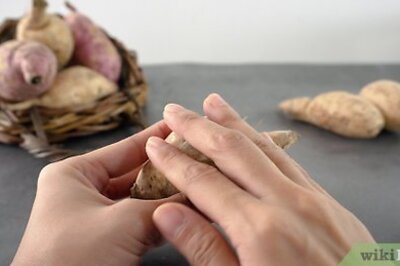


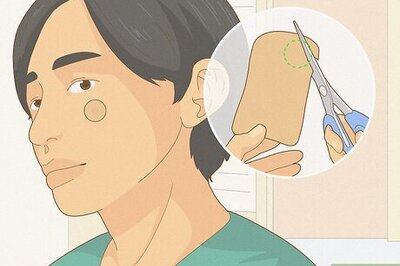

Comments
0 comment